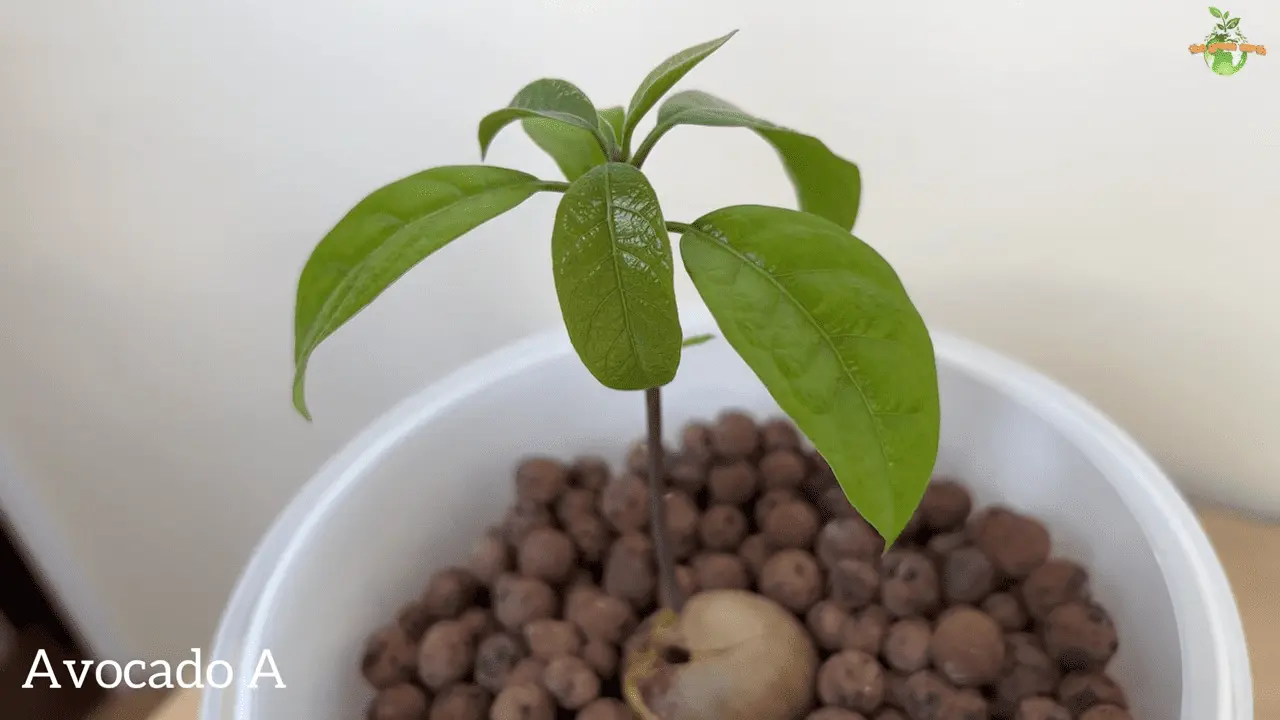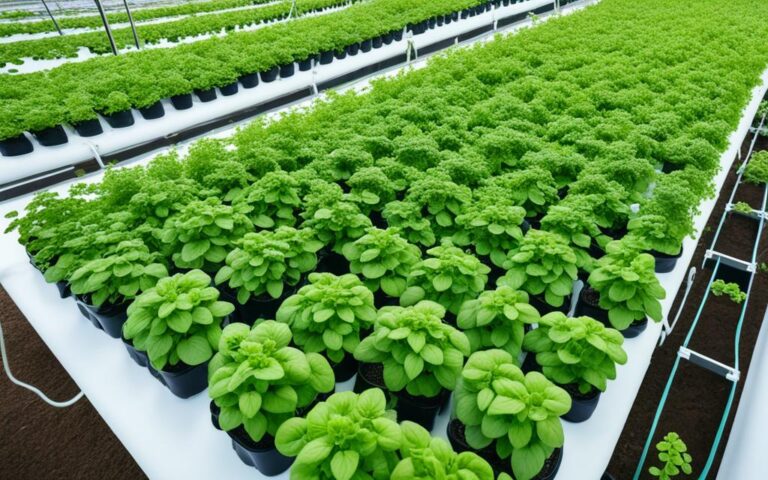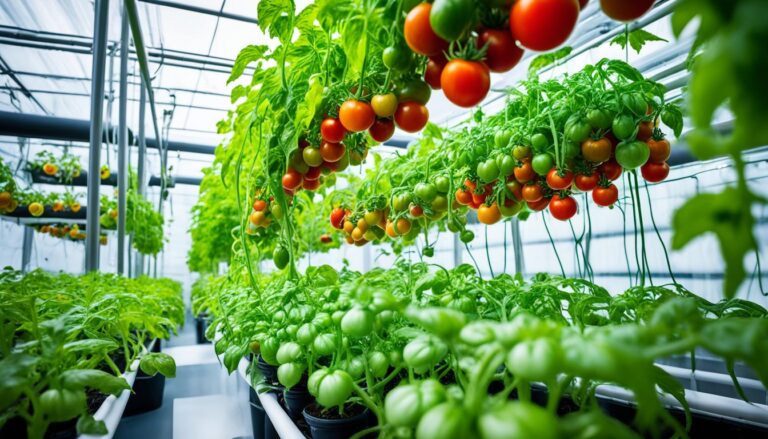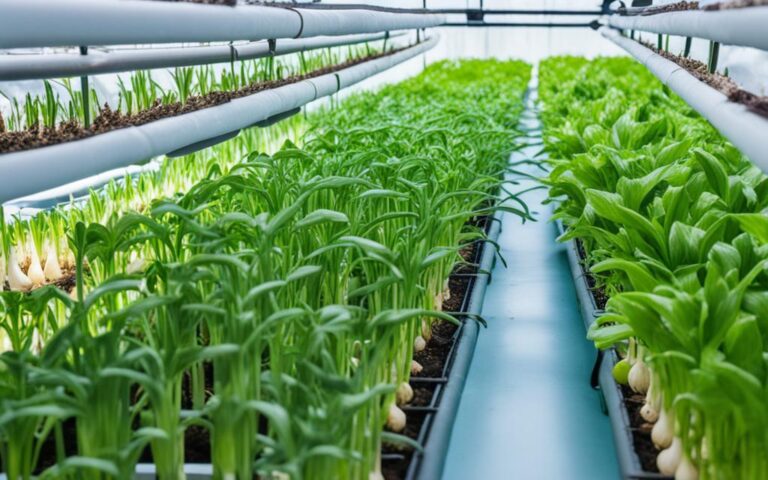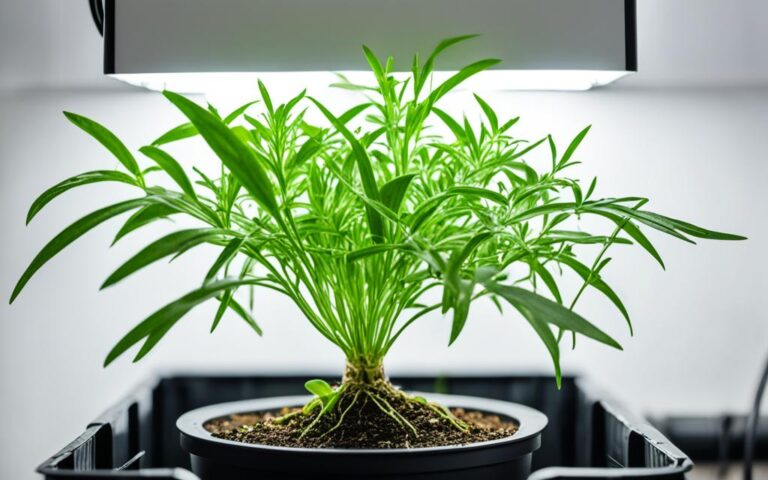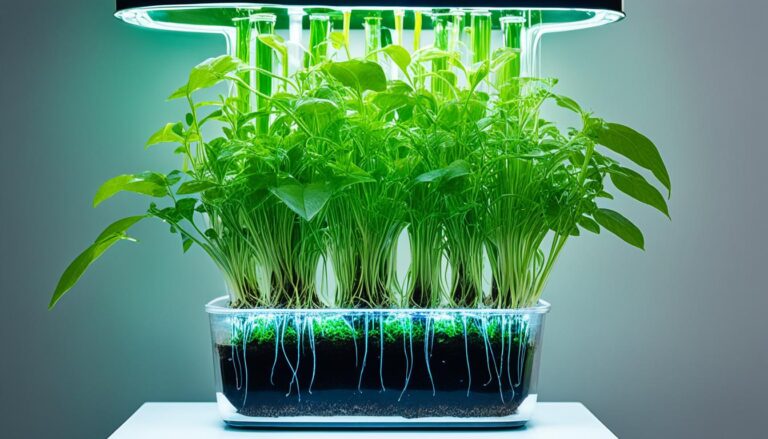Thriving with Hydroponic Avocados: A Guide to Soilless Growth
Hydroponic Avocados, the innovative cultivation method bypassing soil, harnesses nutrient-rich water to nurture plants, offering a sustainable alternative to traditional agriculture. This technique shines in growing avocados, a fruit beloved for its nutritional bounty.
Hydroponically grown avocados benefit from precise nutrient management and consistent moisture, leading to robust growth and potentially higher yields. The controlled environment reduces pest and disease risks, promoting healthier development.
Moreover, hydroponics allows for year-round cultivation, independent of external climate conditions, ensuring a steady supply of avocados. By embracing hydroponics, growers can enjoy the fruits of their labor, both literally and figuratively, as they contribute to a greener future through water-efficient practices.
This guide illuminates the path to thriving avocado trees, detailing the process from seed selection to harvest, tailored for enthusiasts and seasoned gardeners alike.
Table of Contents
Understanding Avocado’s Hydroponic Potential
Why Avocados Are Suitable for Hydroponic Systems

Avocados, with their lush, buttery texture and rich nutritional profile, have become a staple in diets worldwide. Their adaptability to hydroponic systems is due to their root structure and growth patterns. Unlike traditional soil-based cultivation, hydroponics allows for controlled nutrient delivery directly to the roots, which is ideal for the avocado’s high demand for specific nutrients like potassium and phosphorus. This method also ensures consistent moisture levels, preventing the root rot that avocados are prone to when overwatered in soil.
The hydroponic environment offers avocados protection from soil-borne diseases and pests, which can devastate crops. By growing avocados hydroponically, farmers can produce healthier plants that are potentially more productive and have a longer growing season. The ability to grow vertically in stacked layers or in smaller spaces makes hydroponics particularly appealing for avocado cultivation, as it maximizes yield per square foot.
Nutritional Benefits of Avocados
Avocados are a powerhouse of nutrition, providing a substantial amount of healthy monounsaturated fats, which are known to help reduce bad cholesterol levels and lower the risk of heart disease. They are also rich in vitamins C, E, K, and B-6, as well as riboflavin, niacin, folate, pantothenic acid, magnesium, and potassium. They even contain more potassium per gram than bananas, a commonly recognized source of this essential mineral.
The fats in avocados are also beneficial for nutrient absorption. They increase the body’s ability to absorb fat-soluble nutrients, such as vitamins A, D, E, and K, from other foods when consumed together. Furthermore, avocados are loaded with antioxidants and fiber, which aid in maintaining a healthy digestive tract and can help stabilize blood sugar levels.
Environmental Impact and Sustainability
Hydroponic avocado cultivation can significantly reduce the environmental footprint associated with traditional farming methods. Hydroponics uses up to 90% less water than soil-based agriculture, as the closed system recycles water and nutrients. This is particularly important for avocados, which are often grown in water-scarce regions and require a lot of water when cultivated in soil.
Moreover, hydroponics allows for local production, reducing the need for transportation and the associated carbon emissions. By growing avocados closer to the point of consumption, the carbon footprint is further minimized. This method also reduces the need for pesticides and herbicides, as the controlled environment can prevent the spread of pests and diseases without the need for chemical interventions.
Sustainability extends to the economic viability of hydroponic systems. While the initial setup costs can be higher than traditional farming, the increased efficiency, higher yields, and longer growing seasons can lead to greater profitability over time. Additionally, hydroponic systems can be implemented in urban environments, contributing to urban greening and local food security.
In conclusion, the hydroponic cultivation of avocados presents a promising alternative to traditional farming, offering environmental benefits, nutritional advantages, and economic sustainability. As the world moves towards more sustainable agricultural practices, hydroponics stands out as a viable solution for meeting the growing demand for this nutritious fruit.
Choosing the Right Avocado Seed for Hydroponic Success

Selecting the ideal avocado seed is the cornerstone of a thriving hydroponic garden. The journey from a single seed to a bountiful tree laden with creamy avocados begins with understanding the characteristics of a viable seed, choosing the best variety for hydroponic cultivation, and preparing the seed for its soil-less environment.
Characteristics of a Viable Avocado Seed
A viable avocado seed is the genesis of a healthy plant. Look for seeds that are:
- Sizeable and Symmetrical: Larger seeds tend to have more stored energy, which can kick start the growth process. Symmetry is also a sign of healthy development.
- Intact and Clean: The seed should be free from cracks, holes, or discolorations, which could indicate disease or damage.
- Freshness: A fresh seed increases the likelihood of successful germination. Use seeds from recently consumed avocados for best results.
The Best Avocado Varieties for Hydroponics
Not all avocado varieties are created equal when it comes to hydroponic systems. Some of the best varieties include:
- Hass: Renowned for its buttery flesh and high oil content, Hass avocados are the most popular variety globally and adapt well to hydroponic systems.
- Fuerte: This variety is known for its excellent flavor and is a good pollinator for Hass avocados.
- Wurtz: Also known as “Little Cado,” this dwarf variety is perfect for smaller hydroponic setups.
Preparing Your Seed for Hydroponics
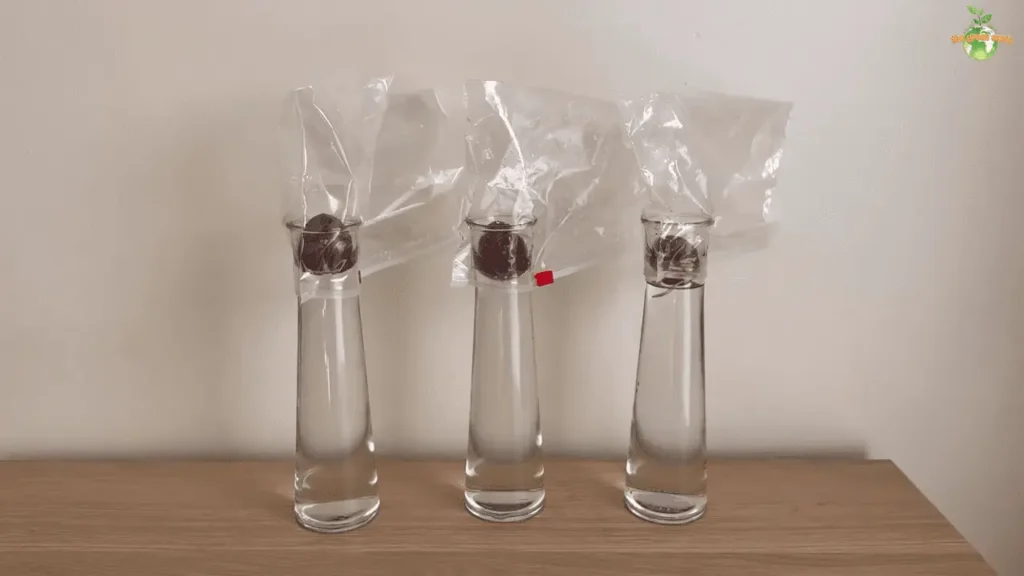
Preparation is key to transitioning your avocado seed from its natural state to a hydroponic system:
- Clean the Seed: Remove any remaining fruit flesh, as it can attract pests or mold. Rinse the seed gently under lukewarm water.
- Soak the Seed: Submerge the seed in water for a few hours to soften the outer layer and encourage germination.
- Germinate the Seed: You can start the germination process by suspending the seed over a container of water, ensuring only the bottom half is submerged.
- Monitor and Wait: Patience is vital. It can take anywhere from 2-6 weeks for roots to emerge. Change the water regularly to prevent algae growth.
Once the roots have developed, and a sprout appears, your avocado seed is ready to be introduced to its hydroponic home. With the right preparation, your avocado tree will be well on its way to providing a fresh supply of this versatile fruit, all while you enjoy the benefits of soilless cultivation.
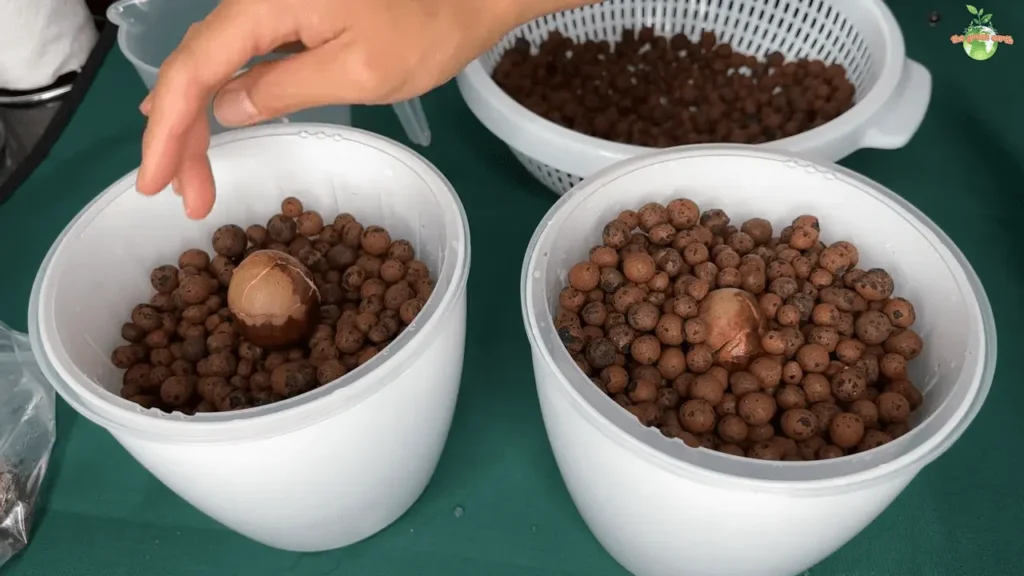
Setting Up Your Hydroponic System for Avocado Cultivation
Embarking on the journey of hydroponic avocado cultivation begins with establishing a robust system that can support the unique needs of this fruit-bearing tree. This section will guide you through selecting the appropriate hydroponic system, the steps to set it up, and the essential equipment and materials required.
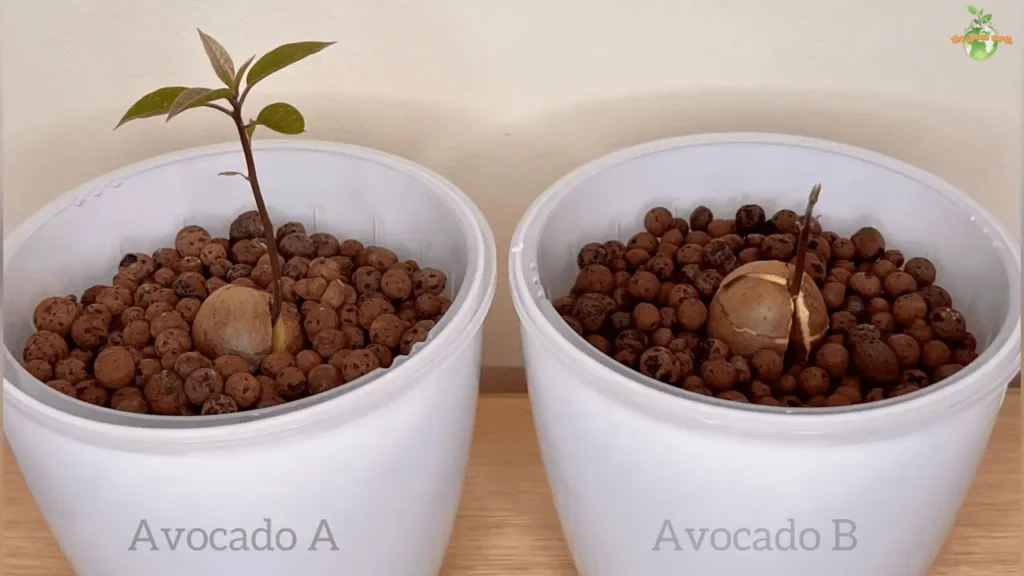
Types of Hydroponic Systems Suitable for Avocados
Avocados thrive in systems that provide ample support for their substantial root systems and allow for easy nutrient uptake. The following hydroponic setups are well-suited for avocados:
- Deep Water Culture (DWC): In this system, the avocado roots are suspended in a nutrient-rich oxygenated water solution, promoting rapid growth and high yields.
- Ebb and Flow: This system periodically floods the root zone with nutrient solution, then drains it back into the reservoir, mimicking natural wet-dry cycles.
- Nutrient Film Technique (NFT): A continuous flow of nutrient solution runs over the roots, providing constant access to nutrients without oversaturation.
Step-by-Step Guide to Setting Up Your System
- Choose Your System: Based on space, budget, and personal preference, select the hydroponic system that best fits your needs.
- Assemble the Structure: Follow the manufacturer’s instructions to assemble the frame or structure of your chosen system.
- Install the Reservoir: Place the nutrient reservoir in a position that allows for easy access and monitoring.
- Set Up the Water Pump: Connect the water pump to the reservoir and ensure it’s powerful enough to circulate the nutrient solution effectively.
- Arrange the Grow Trays or Channels: Position them to receive the nutrient solution from the pump and return excess solution to the reservoir.
- Add the Growing Medium: Fill net pots or grow trays with an inert medium like perlite or clay pellets, which will support the avocado seedling.
- Install Lighting: Set up grow lights to provide your avocado plants with the necessary light spectrum for photosynthesis.
- Test the System: Run the system for a day before adding plants to ensure everything operates smoothly and no leaks are present.
Equipment and Materials Checklist
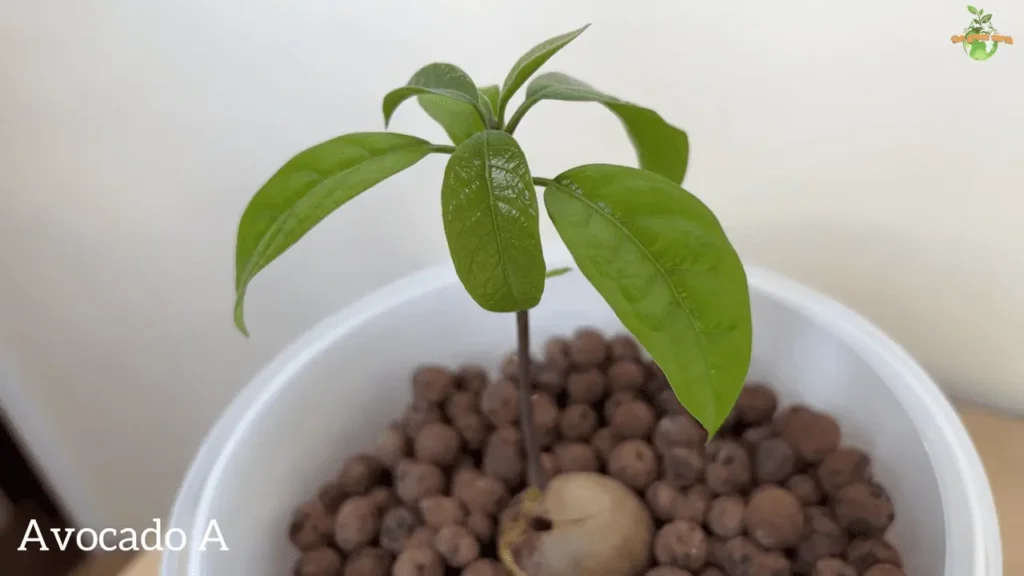
To ensure a successful setup, here’s a checklist of the equipment and materials you’ll need:
- Hydroponic system kit (DWC, Ebb and Flow, or NFT)
- Nutrient reservoir
- Water pump and tubing
- Air pump and air stones (for DWC)
- Net pots or grow trays
- Inert growing medium (perlite, clay pellets)
- pH and EC meters
- Hydroponic nutrients
- Grow lights and timers
- Measuring cups and syringes for nutrient mixing
- Scissors or pruning shears for plant maintenance
With the right system and setup, your hydroponic avocado trees will have the best possible environment to grow and produce fruit. This controlled approach not only maximizes yield but also allows for year-round cultivation, making it an efficient and sustainable method for growing avocados.
Light and Temperature Control for Hydroponic Avocado Growth
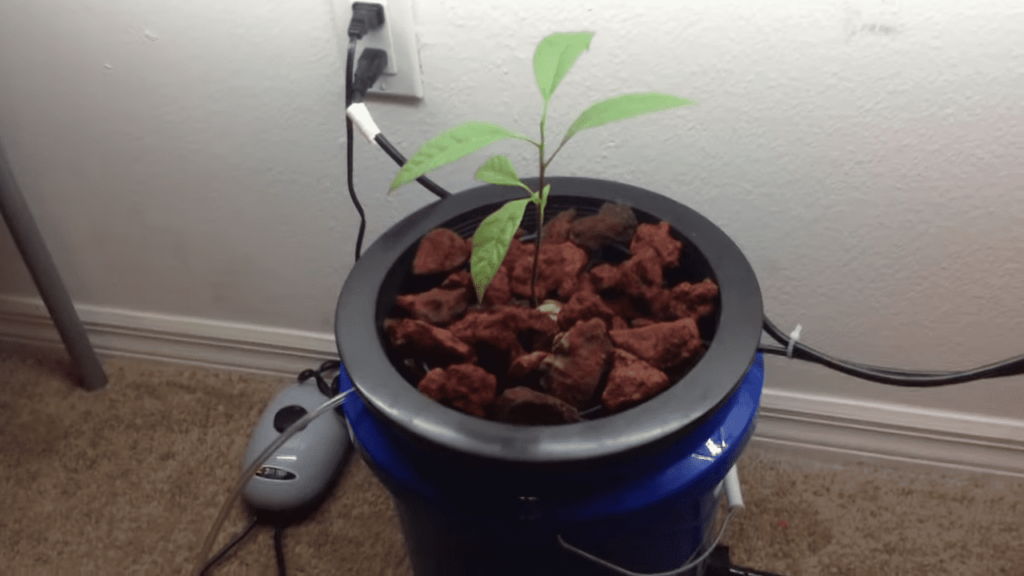
The Crucial Role of Light in Avocado Growth
Light is the lifeblood of all plants, and avocados are no exception. In the realm of hydroponics, where soil is replaced by nutrient-rich water, light becomes even more critical. It drives photosynthesis, the process by which plants convert light energy into chemical energy, fueling their growth and fruit production. For hydroponic avocados, the right light not only influences growth rates but also impacts fruit quality and taste.
Optimal Temperature Ranges for Avocado Plants
Temperature control is equally vital in hydroponic systems. Avocado plants flourish in moderate climates and require specific temperature ranges to optimize their metabolic processes. The ideal temperature range for hydroponic avocados is between 65°F (18°C) and 85°F (29°C). Within this range, avocados can efficiently photosynthesize, absorb nutrients, and transpire, leading to healthy growth and development.
Tips for Maintaining Ideal Growing Conditions
- Use Quality Grow Lights: Invest in full-spectrum LED grow lights that mimic natural sunlight, providing your avocados with the broad range of light wavelengths they need.
- Monitor Light Intensity: Ensure your plants receive about 14-16 hours of light per day. Use a light meter to measure intensity and adjust your grow lights accordingly.
- Control Ambient Temperature: Use a combination of heaters, fans, or air conditioning to maintain the optimal temperature range in your grow room.
- Insulate Your Grow Room: Proper insulation helps stabilize temperatures and can lead to energy savings.
- Automate Your Systems: Implement timers and thermostats to automate light cycles and temperature control, ensuring consistent conditions day and night.
- Regularly Check Plant Health: Observe your plants for signs of stress, such as wilting or discoloration, which can indicate issues with light or temperature.
By mastering light and temperature control in your hydroponic setup, you can create an environment where avocado plants not only survive but thrive. This section of your SEO content would delve into these aspects, providing readers with a detailed understanding of how to manage these critical factors for successful hydroponic avocado cultivation.
Water Quality and Maintenance in Hydroponic Systems
The Vital Role of Water in Hydroponics
In hydroponics, water is the lifeblood of the system, serving as the primary medium through which plants receive nutrients. Unlike soil, which acts as a nutrient reservoir, water in hydroponic systems must be carefully balanced and enriched with the right mix of nutrients to support plant growth. The quality of water directly impacts the health and yield of hydroponic crops, making it essential to maintain optimal conditions at all times.
Maintaining Water Quality and Oxygen Levels
Water quality in hydroponics encompasses several factors, including pH balance, nutrient concentration, and oxygenation. The pH level of the water affects nutrient availability and uptake, with most plants thriving in a slightly acidic environment with a pH of 5.5 to 6.5. Nutrient concentration, measured in Electrical Conductivity (EC) or Parts Per Million (PPM), should be monitored and adjusted according to the growth stage of the plant.
Oxygen levels in the water are crucial for root health. Oxygen-deprived roots can become susceptible to diseases like root rot. Therefore, ensuring adequate oxygenation through air stones or diffusers is necessary for promoting vigorous root growth and preventing disease.
Scheduling and Methods for Water Changes
Regular water changes are a critical aspect of hydroponic maintenance. They prevent the buildup of salts and other residues that can harm plants. The frequency of water changes depends on factors such as the size of the system, the number of plants, and the rate of nutrient uptake. A general rule of thumb is to replace 10-20% of the water volume weekly, with a full system flush every month.
When changing water, it’s important to:
- Test the Water: Before adding fresh water, test the old water for pH and nutrient levels to understand what adjustments may be needed.
- Add Nutrients: After refilling with fresh water, add nutrients to the desired concentration, and adjust the pH as necessary.
- Clean the System: Use this opportunity to clean pumps, filters, and other components to ensure efficient operation.
By maintaining high water quality and proper oxygen levels, and by adhering to a regular water change schedule, hydroponic growers can ensure their plants have access to the essential elements they need to thrive.
Nutrient requirement of avocados:
| Growth Stage | Nutrients Required |
|---|---|
| Seedling | High nitrogen levels for leaf development, along with balanced phosphorus and potassium. |
| Vegetative | Increased nitrogen for foliage growth, adequate phosphorus for root development, and potassium for overall plant health. |
| Flowering | Lower nitrogen compared to vegetative stage, increased phosphorus for flower development, and potassium to support the transition to fruiting. |
| Fruiting | Reduced nitrogen to discourage foliage over fruit, higher phosphorus for fruit development, and potassium for fruit quality. |
| Maturity | Balanced N-P-K for maintenance, along with calcium, magnesium, and sulfur for overall plant health. |
Additionally, micronutrients such as copper (Cu), manganese (Mn), iron (Fe), zinc (Zn), boron (B), molybdenum (Mo), and chlorine (Cl) are required throughout the plant’s life, albeit in smaller quantities. It’s important to monitor the pH level of your hydroponic solution regularly and adjust it accordingly to ensure optimal nutrient uptake.
Creating a successful hydroponic avocado garden involves careful attention to transplanting practices and root care. Here’s a comprehensive guide to ensure your avocado plants thrive:
Transplanting Your Avocado Plant
- When to Transplant: Transplant your avocado seedling when the stem reaches about 6 inches tall. At this stage, cut the stem back to half its height to encourage a bushier growth.
- How to Transplant: Once the stem grows back to 6 inches, it’s time to move the plant to your hydroponic system. Gently place the seedling in a net pot with hydroponic medium, ensuring the roots are well-supported and have ample room for growth.
Managing Root Health and Preventing Root Rot
- Temperature Control: Maintain the water temperature in your hydroponic system, as extreme temperatures can promote root rot.
- Sterile Environment: Keep your hydroponic setup clean to prevent the introduction of pathogens.
- Beneficial Bacteria: Introduce beneficial bacteria to your nutrient solution to help protect roots from harmful microbes.
- Aeration: Ensure your system provides adequate oxygenation to the roots, as this is crucial for preventing root rot.
- Regular Inspection: Monitor your plants for signs of pests or disease and address any issues promptly to maintain root health.
Signs of Healthy Root Development
- Color: Healthy hydroponic roots typically exhibit a bright white or slightly creamy hue, indicating a well-oxygenated system free from disease.
- Texture: The roots should be firm and not slimy, which can be a sign of root rot.
- Odor: There should be no foul smell coming from the roots; a bad odor can indicate decay or disease.
By following these guidelines, you can ensure that your avocado plants are transplanted correctly and that their roots remain healthy, setting the stage for a productive hydroponic garden. Remember, consistent care and monitoring are key to preventing issues and promoting vigorous growth.
Maturity, Flowering, and Harvest of Hydroponic Avocados
Growing avocados hydroponically is a rewarding endeavor that culminates in the harvest of fresh, creamy fruits. Understanding the timeline from seedling to fruit-bearing tree, the intricacies of pollination and flowering, and the techniques for harvesting is crucial for a successful yield.

Timeline from Seedling to Fruit-Bearing Tree
The journey of an avocado tree from a seedling to a mature, fruit-bearing tree is a lengthy one, even in hydroponics. When starting from a seed, it can take anywhere from 5 to 13 years for the tree to mature enough to bear fruit. However, if you opt for a cloned seedling, the wait time can be reduced to 3-4 years. The hydroponic environment can potentially accelerate growth and lead to earlier fruit production compared to traditional soil cultivation.
Pollination and Flowering in Hydroponic Avocados
Avocado trees exhibit a unique flowering behavior known as “protogynous dichogamy,” where the male and female phases of an individual flower occur at different times. This mechanism is believed to promote cross-pollination and, consequently, fruit set. In hydroponic systems, pollination can be facilitated by manually transferring pollen between flowers using a cotton swab or by gently rubbing a flower from one plant against the flowers of another3. Some growers also employ bees or other pollinators to aid in this process.
Harvesting Your Avocados: Signs of Ripeness and Techniques
Harvesting avocados at the right time is essential for quality fruit. Unlike many fruits, avocados do not ripen on the tree; they only ripen after being picked. Signs of ripeness include a slight softness under gentle pressure and, for some varieties, a change in skin color. Harvesting can be done by hand for low-hanging fruits or with a pole picker for higher branches. Once picked, avocados can be stored at room temperature to ripen, which can be expedited by placing them in a paper bag with ethylene-producing fruits like apples or bananas.
Troubleshooting Common Problems in Hydroponic Systems
Identifying and Addressing Nutrient Deficiencies
Nutrient deficiencies can significantly impact plant health, growth, and yield. In hydroponics, where plants receive their nutrients from solutions, it’s crucial to identify and address these deficiencies promptly. Here are common signs of nutrient deficiencies and how to address them:
- Nitrogen: Pale green or yellow leaves and stunted growth. To correct this, increase nitrogen levels in your nutrient solution.
- Phosphorous: Dark leaves with a red or purple appearance, often due to cold nutrient solutions. Ensure the solution is at the correct temperature to improve uptake.
- Potassium: Leaves with burnt edges and brown spots, usually appearing on older leaves first. Adjust your nutrient solution to include more potassium.
- Magnesium: Yellowing around leaf edges, commonly seen in tomato plants. Add magnesium to your nutrient mix to alleviate this issue.
- Calcium: Newer leaves with dead spots and stunted growth. Incorporate calcium into your nutrient regimen.
- Iron: Yellowing of younger leaves. Ensure your water temperature is not too cold, which can hinder iron absorption.
Regular monitoring and adjusting your nutrient solution based on plant feedback is essential for maintaining optimal plant health.
Dealing with Pests and Diseases
Pests and diseases can quickly overrun a hydroponic system if not managed properly. Here are some common pests and diseases along with control methods:
- Spider Mites: Look for webbing or wipe under leaves with a tissue to check for mites. Use organic pesticides or introduce natural predators to control them.
- Thrips: Identify by metallic black specks and yellowing leaves. Blue sticky traps and organic sprays can help manage thrips.
- Aphids: These can be green, black, or gray and suck the juice from leaves. Use insecticidal soaps or neem oil for control.
- Fungus Gnats: Larvae feed on roots, causing growth issues. Yellow sticky traps and beneficial nematodes can be effective against gnats.
Implementing preventive measures such as proper sanitation, using clean water, and monitoring plants regularly can help avoid infestations.
Solutions for Common Hydroponic Issues
Hydroponic systems can face various issues, but most can be prevented or resolved with proper care:
- System Leaks: Regularly check for leaks and ensure all connections are secure. Choose a reservoir that can hold the entire nutrient solution to prevent overflow.
- Lighting Problems: Invest in quality LED or T5 fluorescent grow lights and ensure they provide sufficient light for your plants.
- Root Rot: Keep nutrient solution temperatures below 75°F, maintain proper aeration, and protect roots from light exposure to prevent root rot.
- pH Imbalances: Regularly check and adjust the pH of your nutrient solution to ensure optimal nutrient uptake.
Advanced Tips and Techniques for Hydroponic Avocado Cultivation
Growing avocados hydroponically is an innovative approach to agriculture, offering a sustainable and space-efficient way to produce this nutrient-rich fruit. To maximize the potential of your hydroponic avocado trees, advanced techniques such as pruning, training, enhancing fruit production, and experimenting with different hydroponic variations are essential.
Pruning and Training Your Avocado Tree
Pruning is crucial for maintaining the health and productivity of your avocado tree. It helps to manage the size of the tree, encourages the growth of new fruiting wood, and allows better light penetration and air circulation within the canopy.
- When to Prune: The best time to prune is during the late winter or early spring before the onset of new growth.
- How to Prune: Remove dead or diseased wood, thin out crowded branches, and cut back the main stem to encourage lateral growth.
- Training: Use stakes and ties to guide the direction of new growth and create a strong, balanced structure for your tree.
Enhancing Fruit Production
To increase the yield of your hydroponic avocado tree, consider the following:
- Pollination: Ensure proper pollination by introducing bees or manually transferring pollen between flowers.
- Nutrient Management: Regularly monitor and adjust the nutrient solution to provide the optimal balance for fruit development.
- Light Optimization: Utilize grow lights to supplement natural light and maintain a consistent photoperiod.
Experimenting with Different Hydroponic Variations
Experimenting with different hydroponic systems can lead to improvements in growth rates and yields. Consider these variations:
- Deep Water Culture (DWC): Allows roots to be submerged in a nutrient-rich solution, providing constant access to nutrients.
- Nutrient Film Technique (NFT): A thin film of nutrient solution flows over the roots, suitable for smaller setups.
- Ebb and Flow: Periodically floods the root zone with nutrients, then drains back, mimicking natural cycles.
Conclusion
As we wrap up this comprehensive guide on hydroponic avocado cultivation, let’s reflect on the numerous benefits this innovative method offers. Hydroponics presents a sustainable, water-efficient approach to gardening that allows for year-round production, free from the constraints of soil and traditional farming limitations. It opens up possibilities for urban agriculture, reduces the carbon footprint associated with food transport, and minimizes the use of pesticides and herbicides.
The controlled environment of hydroponics enables precise nutrient management, leading to healthier plants and potentially higher yields. Moreover, it offers a solution to farming in areas with poor soil quality or limited water resources. By adopting hydroponic practices, gardeners and farmers alike contribute to a more sustainable and environmentally friendly future.
Now, it’s your turn to embark on this rewarding journey. Whether you’re a seasoned gardener or a curious beginner, hydroponic avocado cultivation is an exciting venture that promises not just a bounty of fruits but also the satisfaction of embracing eco-friendly practices. So, gather your supplies, set up your system, and join the growing community of hydroponic enthusiasts. Grow your avocados, share your successes, and enjoy the taste of sustainability. Let’s cultivate a greener world together—one avocado tree at a time. 🥑🌱
FAQs
Can hydroponic avocados match the taste of soil-grown ones?
Hydroponic avocados can indeed match and sometimes even surpass the taste of soil-grown avocados. The controlled environment allows for precise nutrient management, which can lead to a richer flavor profile.
What are the challenges of pollinating avocado trees in a hydroponic setup?
Pollination can be more challenging in a controlled environment due to the lack of natural pollinators. Manual pollination or the use of pollinator insects within the grow area can address this challenge.
How does the fruit size of hydroponically grown avocados compare to traditional methods?
With optimal nutrient and environmental control, hydroponically grown avocados can achieve sizes comparable to or larger than those grown in soil, depending on the variety and conditions.
Are there any specific hydroponic systems that work best for avocado trees?
Deep Water Culture (DWC) and Nutrient Film Technique (NFT) systems are often favored for their efficiency in nutrient delivery and oxygenation, which are crucial for the large root systems of avocado trees.
Can hydroponic systems help with the early detection of avocado diseases?
Yes, the transparency of hydroponic systems allows for closer monitoring of plant health, making it easier to detect and address diseases like root rot at an early stage.
